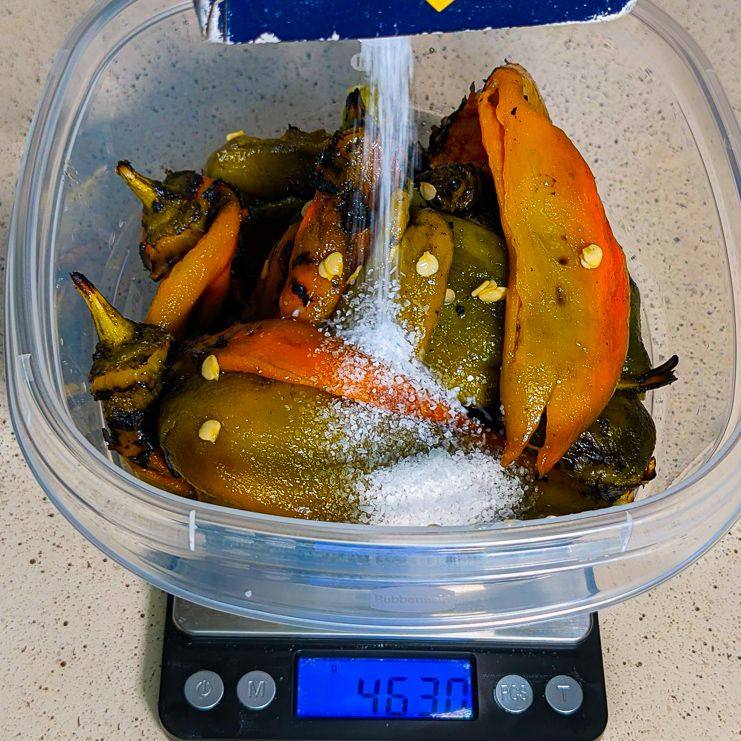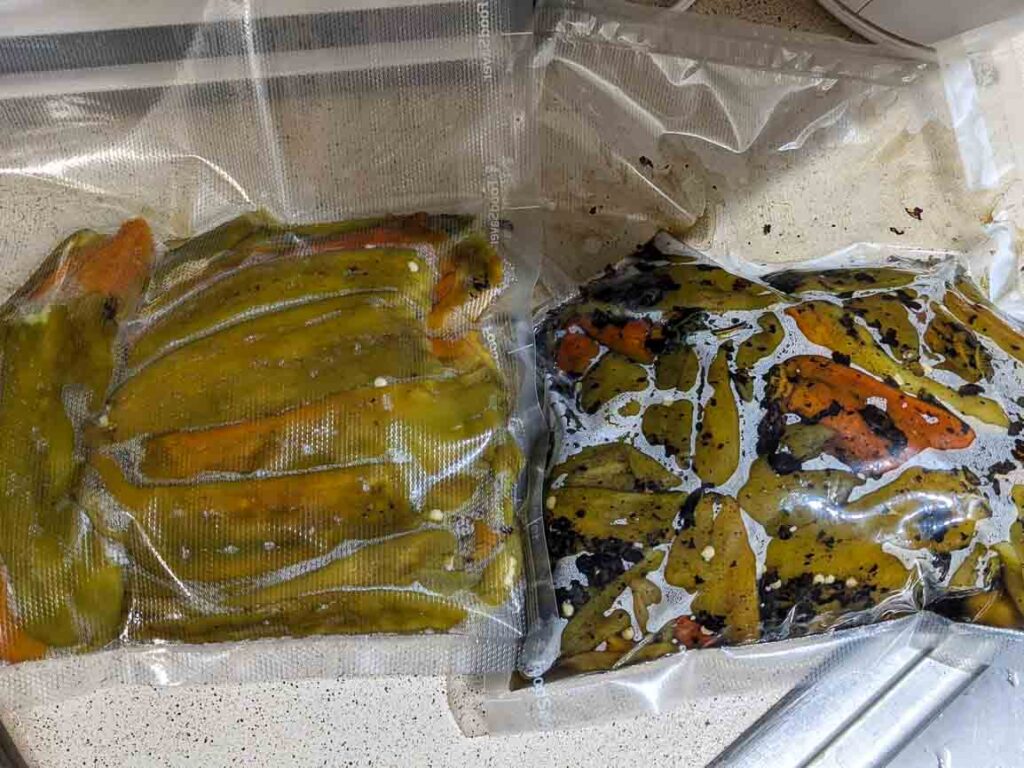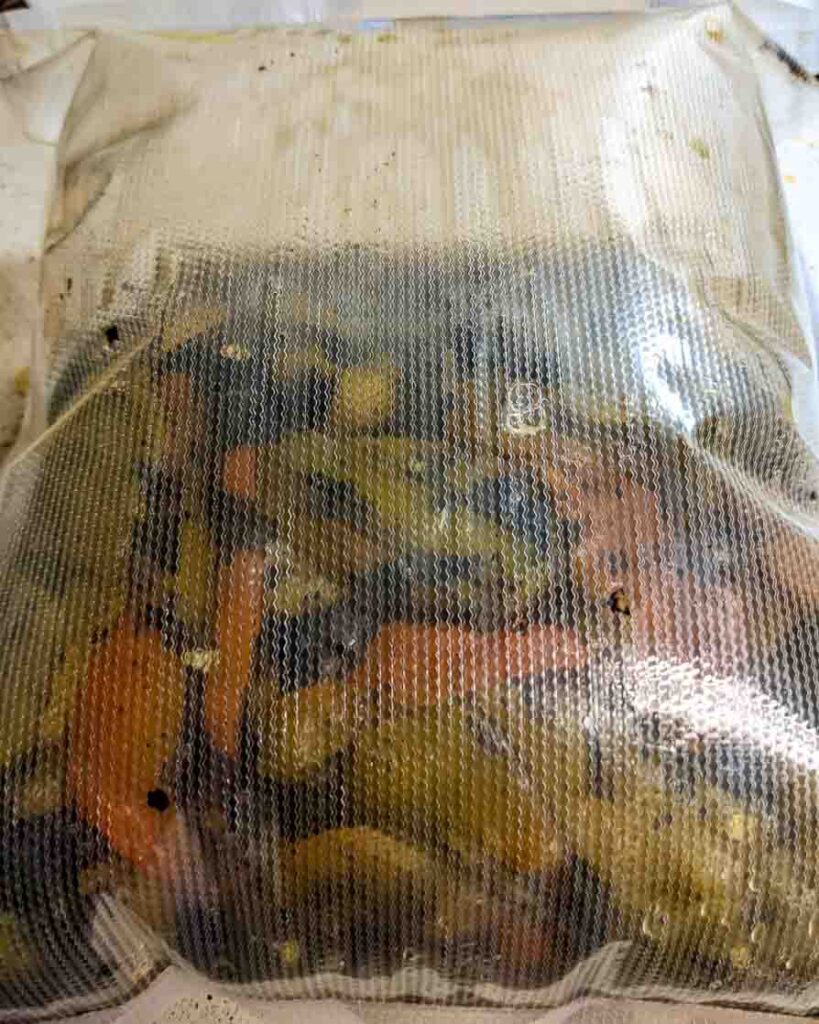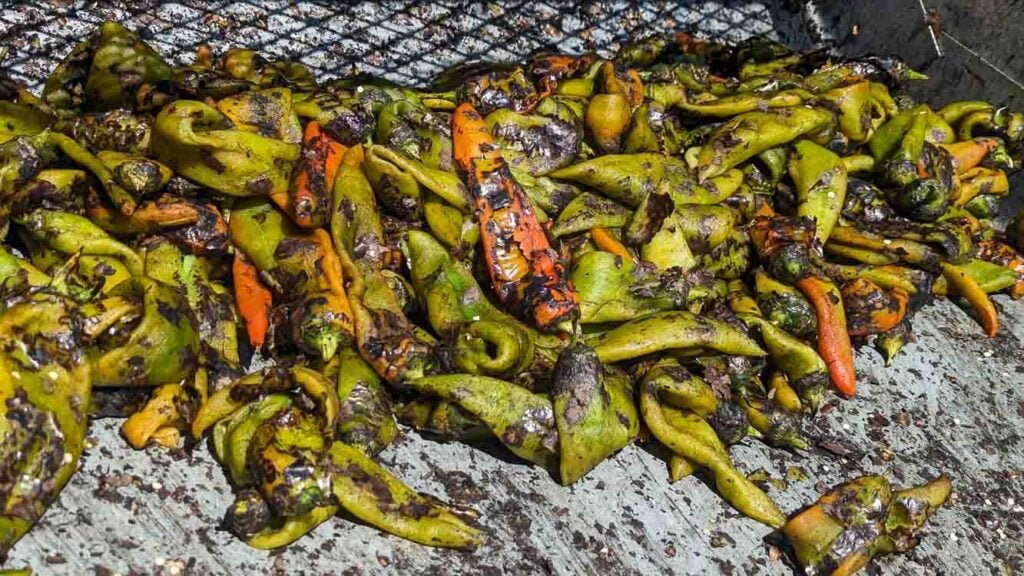Your cart is currently empty!
Fermented New Mexico Green Chile

My experience with fermentation
I’ve been an avid fan of fermentation for years. Whether it is brewing beer with yeast, using salt to encourage lactobacteria, or using koji to ferment different grains, I have done them all. There is a special complexity of flavor which only fermentation unlocks. Today, I’d like to share the idea of fermenting roasted New Mexico green chile.
How to ferment Roasted green chile
Get a precise scale and put your fresh roasted chile on it. Choose your heat level based on your preference, and get something hotter if you want to mix with other ingredients. You can peel the chile before or not, the choice is yours. Personally, I prefer to take the stem off, but leave the peel on, as the smoky flavor comes through really nicely. Get your weight and divide it by 40, then put that amount of salt in. In other words, add 2.5% of the chile’s weight in salt. This will give you a safe salt level in the finished product, and prevent or limit pathogens from growing. Mix the salt around evenly, and put into a vacuum sealed bag. Suck all the air out to prevent kahm yeasts from having access to oxygen. Yeasts need oxygen to duplicate. For this, you don’t want a yeast based fermentation, you want to encourage lactic bacteria to ferment the roasted chile.

Wait a few days
After you suck all the air out and seal the bag, leave it in a corner away from light at room temperature. You will notice that the bag starts to puff up. This is because co2 is released as a byproduct of the bacteria fermenting the chile. If the bag becomes too swollen, cut open a small corner of the bag, suck the air out again, and reseal. Unless you leave it in a very hot place, you shouldn’t need to do this more than about once after 4 or 5 days. When you open it, try a small amount of chile to see the flavor. When it has a flavor you are satisfied with, stick it in the fridge and use it whenever you like. Try to ensure it is pretty sour before you stop the fermentation, as pH is the limiting factor in certain pathogen growth. If you are measuring it, 4.6 and under is the golden level for food safety.

Dangers of Fermentation
Fermentation if done properly is quite safe, as bacteria typically lower the pH faster than pathogens can build up enough cell count to be dangerous. That being said, there are plenty of things that can go wrong. If you see evidence of mold, throw it away. You can always get more chile, but sometimes pathogens can still grow due to various accidents. Be sure to use chile that is freshly roasted for ideal food safety. Our barrel roasters are hot enough to kill any botulism spores, but that doesn’t mean much if you let your chile sit around for hours before you work on it. We hold no responsibility for any sickness that may result from improper fermentation. Do this at your own risk.

Reasons to ferment
The benefits of fermentation are vast. There are many different flavor compounds as well as nutrients which are unlocked by different bacteria and fungi. The key is mainly to provide a good environment for whatever you are trying to produce, and you will generally be rewarded with a great tasting result.
Today, I want to talk about fermenting green chile. In my experience, it ferments better than red, and rewards you with a very bright and uplifting flavor to any dish. If you have had kimchi, you know that it gives a sour and spicy nature, and elevates the flavor of a dish. Fermented green chile does the same. It maintains some of the earthy smokiness, but lends a dish a brightening acidity, which increases the perceived flavor of what you use it on.
When you ferment the chile, you will notice that it smells something like sport peppers. The bacteria which ferments them is also a type of lactobacillus, so this makes sense. The big difference though, is that sport peppers aren’t terribly flavorful. Roasted green chile is. Fermented green chile provides the brightness of sport peppers along with the rich flavor of the chile. In many ways, the flavor of the green chile is brought out more.
It ends up tasting strikingly New Mexican, while also having a special something extra. It goes amazingly on burgers or hot dogs, as well as making a unique and delicious sauce. One of my favorite ways to use it was making a fresh ricotta using the acidic brine. This made such an amazing smoky and spicy fresh ricotta cheese for a uniquely New Mexican style lasagna.
If you need some fresh roasted green chile in Albuquerque, make sure to swing on by 2010 Eubank Blvd NE and pick some up. We are open and roasting every August to the end of October. We also have frozen chile until around Christmas, but freezing changes the texture and might make your fermented product somewhat mushy if you use it. In case you are interested in a little fact, red chile pods also undergo a natural fermentation process which renders the sugars from the ripe chile into other flavor compounds. It is a big reason why the flavor of pods and chile from a ristra taste so complex!
Check back here for a guide to ferment green chile and other things, and check out my blog or my personal website if you want to learn more about beer based fermentation.